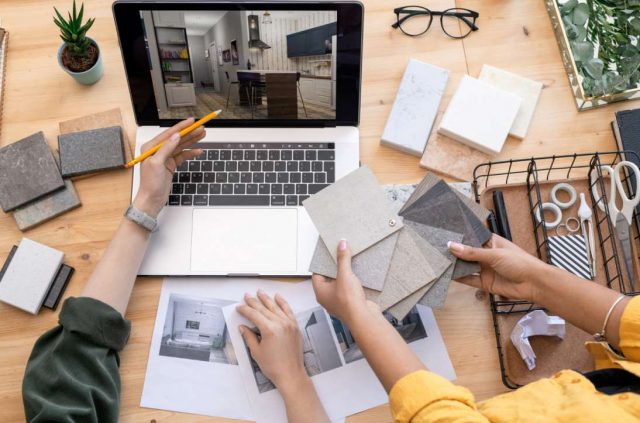Introduction
Designing a space, whether it’s a home, office, or commercial establishment, requires careful planning and visualization. Traditionally, creating accurate floor plans and experimenting with different layouts involved time-consuming processes and specialized knowledge. However, with the advent of floor plan apps, interior planning has been transformed. These innovative tools have revolutionized the way spaces are designed and allow users to visualize and optimize their layouts with ease. In this article, we will explore how floor plan apps are reshaping interior planning, their key features, and the benefits they offer to both professionals and homeowners. (1)
Key features, and the benefits of floor plan apps
- Enhanced Visualization and Realism
Floor plan apps offer a range of features that enhance visualization and provide a realistic representation of spaces. These apps allow users to create accurate 2D and 3D floor plans, complete with dimensions and measurements. Users can then visualize their designs from different angles, gaining a comprehensive understanding of the space’s layout and proportions. This level of visual accuracy enables users to make informed decisions regarding furniture placement, traffic flow, and overall functionality.
Furthermore, many floor plan apps incorporate realistic rendering capabilities, allowing users to add textures, colours, and finishes to their virtual spaces. By experimenting with various materials and design elements, users can obtain a lifelike representation of their vision, making it easier to assess the aesthetics and make well-informed design choices.
- Flexible Space Planning and Layout Optimization
One of the primary benefits of floor plan apps is their ability to facilitate flexible space planning and layout optimization. These apps offer drag-and-drop functionality, allowing users to easily manipulate walls, doors, windows, and furniture within the virtual floor plan. This flexibility enables users to experiment with different arrangements, efficiently utilizing available space to maximize functionality and aesthetic appeal.
Floor plan apps often provide a library of pre-designed furniture and decor items, making it convenient for users to explore different options and see how various pieces fit within the space. Users can resize and rearrange furniture, try different configurations, and instantly see the impact on the overall layout. This iterative process empowers users to fine-tune their designs, ensuring that every square foot is optimized for its intended purpose.
- Collaboration and Communication
Floor plan apps excel in facilitating collaboration and communication between professionals, clients, and stakeholders involved in the design process. These apps often offer cloud-based platforms where multiple users can access and work on the same floor plan simultaneously. This collaborative feature allows designers, architects, and clients to interact in real-time, making design decisions collectively and streamlining the approval process.
Moreover, floor plan apps enable effective communication by providing annotation and commenting features. Users can annotate specific areas of the floor plan, leave comments, and provide feedback directly within the app. This eliminates the need for lengthy email chains or in-person meetings, saving time and ensuring that everyone involved is on the same page.
- Time and Cost Efficiency
Floor plan apps significantly enhance time and cost efficiency in the interior planning process. Traditional methods of creating floor plans involved manual measurements, sketches, and physical prototypes. With floor plan apps, the entire process becomes digital and streamlined. Users can create accurate floor plans within minutes, eliminating the need for manual calculations and drawings. This time-saving aspect allows professionals to focus more on the creative aspects of design rather than tedious administrative tasks.
In terms of cost efficiency, floor plan apps help users avoid costly mistakes by providing a platform to experiment and visualize designs before implementing them physically. Users can try different layouts, test colour schemes, and experiment with furniture arrangements virtually. This iterative approach reduces the risk of design errors and costly modifications during the construction or renovation phase.
Conclusion
Floor plan apps have revolutionized interior planning, providing users with powerful tools to visualize and optimize their spaces. By offering enhanced visualization and realism, flexible space planning capabilities, collaborative features, and time and cost efficiency, these apps have become essential companions for professionals and homeowners alike. As technology continues to advance, we can expect floor plan apps to further transform the interior design industry, empowering users to bring their visions to life with precision and creativity. (2)

Speaks from heart, always too passionate and driven by emotions. Spins the words with kindness & sharpness, intriguing your ever-inscrutable minds.


